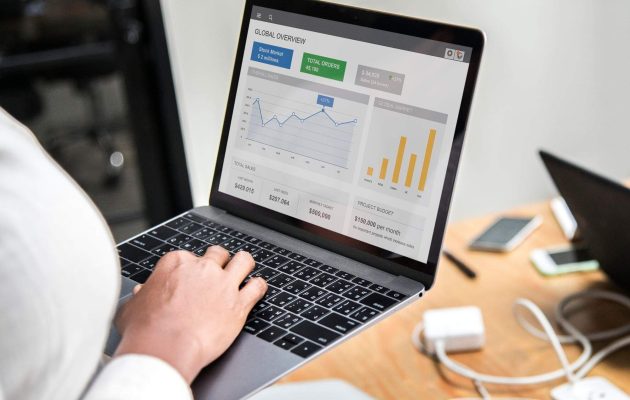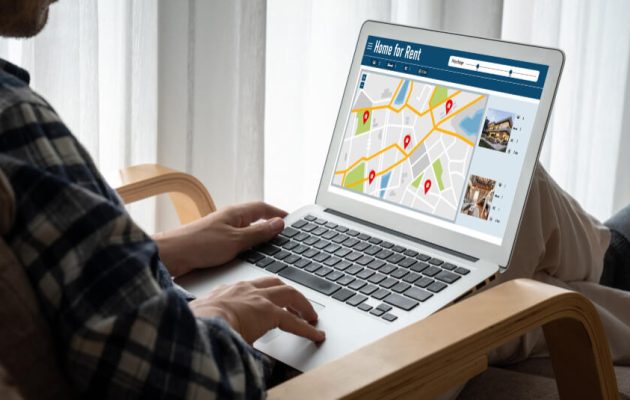Creating a Custom Website That Converts for Local Businesses
Creating a Custom Website That Converts for Local Businesses
As we delve into the realm of creating custom websites for local businesses, we’re faced with a unique challenge: how do we design a digital space that not only looks great but also drives real results? It’s not just about having an online presence anymore; it’s about crafting a website that truly converts visitors into customers. We’ll uncover the key elements that make a local business website stand out and perform in today’s competitive digital landscape. From understanding your audience to optimizing for local search, there’s a lot to ponder. But don’t worry—we’ve got the insights you need to turn your website into a powerful business tool.
Key Points
- Understand your target audience’s demographics and preferences to create personalized, compelling content.
- Design for optimal user experience with responsive layouts, intuitive navigation, and fast-loading pages.
- Optimize for local SEO using location-specific keywords and maximizing your Google My Business profile.
- Craft powerful calls-to-action with action-oriented language and strategic placement throughout the website.
- Measure and improve performance using analytics tools to track user behavior and conversion rates.
Understanding Your Target Audience
Understanding your target audience is the cornerstone of creating an effective website for local businesses. We need to dive deep into the demographics, behaviors, and preferences of our potential customers to tailor our online presence accordingly. By analyzing data from local market research, customer surveys, and competitor insights, we can paint a clear picture of who we’re trying to reach.
Let’s focus on key metrics like age, income, location, and online habits. These insights will guide our design choices, content strategy, and user experience optimization. We’ll use tools like Google Analytics and social media insights to track user behavior and refine our approach continuously.
Remember, our website isn’t just a digital brochure—it’s a conversion machine. By understanding our audience’s pain points and desires, we can craft compelling calls-to-action and persuasive copy that resonates with them. This targeted approach will improve our search engine rankings and boost our ROI.
As local business owners, we’re part of the community. Let’s leverage that connection by highlighting our local expertise and creating content that speaks directly to our neighbors’ needs. This personalized touch will set us apart from generic, corporate competitors and foster a sense of belonging among our clientele.
Designing for User Experience
Three key principles guide our approach to designing for user experience: simplicity, responsiveness, and accessibility. We prioritize clean layouts, intuitive navigation, and fast-loading pages to keep visitors engaged and reduce bounce rates. Our data shows that mobile-friendly designs can increase conversions by up to 30%.
To create a website that resonates with your local audience, our focus lies in these UX elements:
| Visual | Functional | Technical |
| Colors | Navigation | Load Speed |
| Fonts | Forms | Mobile Optimization |
| Images | CTAs | SEO Structure |
| Layout | Search | Security |
| Whitespace | Feedback | Analytics Integration |
Optimizing for Local SEO
We’ll now focus on optimizing your local business website for search engines to attract nearby customers. Our approach includes conducting local keyword research, maximizing your Google My Business profile, and creating location-specific content. These strategies will boost your visibility in local search results, driving more targeted traffic to your site and increasing your chances of converting visitors into customers.
Local Keyword Research
Local keyword research forms the backbone of any successful local SEO strategy. We’ll show you how to uncover the most valuable search terms for your business.
Start by brainstorming a list of services, products, and location-specific phrases your customers might use. Then, leverage tools like Google Keyword Planner, SEMrush, or Moz Local to expand this list and gather search volume data.
Don’t forget to include long-tail keywords and location modifiers. These often have lower competition and higher conversion rates.
We recommend targeting phrases like:
- “optimal [service] in [city]”
- “[service] nearby.”
Also, consider local landmarks, neighborhoods, and colloquialisms that resonate with your community.
Analyze your competitors’ websites to identify keywords they’re ranking for, but don’t neglect opportunities they might’ve missed. Remember, it’s not just about search volume; relevance and intent are pivotal.
Focus on keywords that align with your business goals and customer needs.
Google My Business Optimization
Optimizing your Google My Business (GMB) profile is vital for dominating local search results. We’ll show you how to leverage this powerful tool to boost your local SEO and attract more customers to your website.
First, claim and verify your GMB listing. This step is crucial for establishing credibility and ensuring you control your business information.
Next, we’ll focus on completing every section of your profile with accurate, keyword-rich content. We’ll include your business name, address, phone number, website URL, business hours, and a compelling description that highlights your unique selling points.
Let’s add high-quality photos and videos to showcase your products, services, and team. We’ll also encourage satisfied customers to leave reviews, as these greatly impact your local search rankings. Responding promptly to reviews, both positive and negative, demonstrates engagement and builds trust with potential customers.
We’ll utilize GMB posts to share updates, promotions, and events, keeping your profile fresh and engaging. By consistently updating your GMB listing and monitoring its performance through GMB Insights, we’ll fine-tune our strategies to maximize your local SEO impact and drive more conversions.
Location-Specific Content Creation
To dominate local search results, creating location-specific content is essential. We need to focus on crafting content that resonates with our local audience and showcases our deep understanding of the community. Let’s start by incorporating local landmarks, events, and neighborhoods into our website copy, blog posts, and service pages.
We’ll use location-based keywords strategically throughout our content, ensuring they’re naturally integrated and provide value to our readers. This approach not only boosts our local SEO but also helps us connect with potential customers on a more personal level.
Our content strategy should include creating location-specific landing pages for each area we serve. These pages will highlight our services in relation to specific neighborhoods, addressing unique local needs and challenges.
We’ll also develop a local resource section, featuring community events, local business partnerships, and area-specific tips.
Creating Compelling Content
When it comes to producing compelling content for your local business website, the impact on your digital presence can’t be overstressed. We need to focus on crafting content that resonates with our target audience and drives conversions. To accomplish this, we’ll implement a data-driven approach, analyzing user behavior and search trends to inform our content strategy.
We’ll start by conducting keyword research specific to our local market, identifying high-value terms that potential customers are searching for. This SEO-savvy technique will help us optimize our content for search engines while addressing our audience’s needs.
We’ll create a mix of informative blog posts, product descriptions, and service pages that showcase our expertise and build trust with our community.
To boost engagement, we’ll incorporate local elements, such as customer success stories, community involvement, and area-specific information. We’ll use clear, concise language that speaks directly to our audience’s pain points and desires.
Implementing Effective Call-to-Actions
With our content strategy in place, we now turn our attention to crafting powerful calls-to-action (CTAs) that will drive user engagement and conversions. Effective CTAs are essential for guiding visitors through the sales funnel and maximizing ROI. We’ll strategically place these CTAs throughout the website, ensuring they’re visible, compelling, and aligned with user intent.
To create high-converting CTAs, we’ll focus on action-oriented language, strong verbs, and a sense of urgency. We’ll use contrasting colors and whitespace to make them stand out, and A/B test different variations to optimize performance. Remember, each CTA should offer clear value to the user, whether it’s downloading a free guide, scheduling a consultation, or making a purchase.
To evoke emotion and drive action, consider these CTA elements:
- Limited-time offers to create a sense of scarcity
- Social proof to build trust and credibility
- Personalized messaging to foster connection
- Risk-free trials to alleviate hesitation
Measuring and Improving Performance
Once we’ve launched our custom website, it’s crucial to measure its performance and continuously enhance. Let’s delve into the key metrics we’ll monitor and the tools we’ll utilize to optimize our site’s effectiveness.
First, we’ll establish Google Analytics to monitor traffic, user behavior, and conversion rates. We’ll concentrate on metrics like bounce rate, time on page, and goal completions to comprehend how visitors interact with our site. By analyzing this data, we can pinpoint areas for enhancement and make data-driven decisions.
Next, we’ll utilize tools like Google Search Console and SEMrush to track our search engine rankings and organic traffic. We’ll improve our on-page SEO elements, establish quality backlinks, and create content that resonates with our local audience to enhance our visibility.
To enhance site speed, we’ll leverage PageSpeed Insights and GTmetrix to identify and fix performance issues. Remember, quicker loading times lead to superior user experience and higher search rankings.
Frequently Asked Questions
How Much Does a Custom Website for a Local Business Typically Cost?
We’ve found custom websites for local businesses typically range from $2,000 to $10,000. The cost depends on complexity, features, and design. Let’s work together to find a solution that fits your budget and drives ROI.
What Is the Average Timeline for Developing a Custom Local Business Website?
We typically see custom local business websites take 4-8 weeks to develop. This timeline allows us to optimize for SEO, maximize ROI, and create a site that truly resonates with your audience. Let’s work together to meet your goals!
Should I Use a Website Builder or Hire a Professional Web Developer?
We recommend hiring a professional web developer for best results. While website builders are user-friendly, a skilled developer can create a customized, high-converting site that aligns with our SEO goals and maximizes our ROI. Let’s invest in expertise.
How Often Should I Update My Local Business Website?
We recommend updating your local business website at least monthly. Fresh content boosts SEO, keeps customers engaged, and shows you’re active. Regular updates can increase traffic by 50% and improve conversion rates. Don’t let your site go stale!
Can I Integrate My Social Media Accounts With My Custom Website?
We recommend integrating your social media accounts with your custom website. It’s a game-changer for engagement and SEO. We’ll seamlessly connect your platforms, boosting visibility and creating a cohesive online presence that resonates with our community.
Takeaway
We’ve covered vital strategies for creating a high-converting local business website. By understanding our audience, prioritizing user experience, and optimizing for local SEO, we’re setting the stage for success. Our compelling content and strategic CTAs will drive conversions, while ongoing performance analysis guarantees continuous improvement. Let’s implement these data-driven, ROI-focused tactics to enhance our local online presence and maximize conversions. Remember, a well-crafted website isn’t just an expense—it’s an investment in our business’s growth and profitability.



